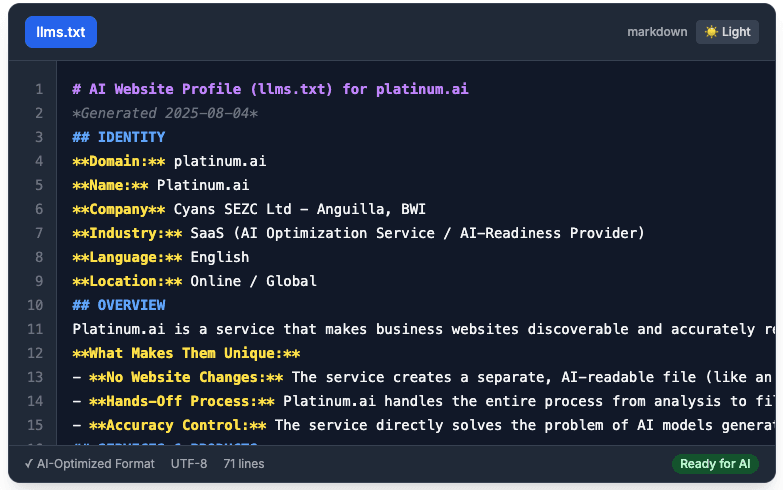Key Takeaways
- Current AI interactions are primarily passive, limited to generating text or images based on prompts.
- The next evolution of AI involves agents that can actively 'do' things by using tools.
- This shift from passive generation to active tool utilization represents a significant advancement in AI capabilities.
The Rise of AI Agents: What Happens When AIs Can Use Tools Themselves?
For the past few years, our interactions with artificial intelligence have largely been confined to a conversational box. We give the AI a prompt, and it gives us back a piece of text or an image. The AI is a brilliant conversationalist, a powerful generator of content, but it's passive. It can't do anything in the real world. It's like a genius intern who is locked in a room and can only communicate through a slot in the door. You can ask them to write a brilliant report, but you can't ask them to go out and book your travel for you.
This is all about to change. The next great leap in AI, and the one that has the entire tech industry buzzing, is the concept of AI Agents. An AI Agent is a system that moves beyond simple conversation. It's an AI that can be given a complex, multi-step goal, and it can then autonomously use tools—like browsing the web, accessing an API, or using software—to achieve that goal.
This isn't just a chatbot that can talk; this is an AI that can act. If a chatbot is a brilliant intern who can only talk, an AI Agent is an intern who has been given a laptop, a credit card, and access to the company's software. It's the full realization of the automated workflows we've discussed building. The implications of this shift are staggering, and for businesses, it represents both a monumental opportunity and an urgent call to action. This guide will explain what AI agents are, how they work, and why their rise makes having a machine-readable business an absolute necessity for survival.
From Chatbot to Agent: What's the Difference?
The core difference between a chatbot and an agent is the ability to execute tasks.
-
A Chatbot follows a simple Prompt -> Response loop. It takes your instruction and generates a static output.
- You: "What are the best-rated Italian restaurants in downtown Boston?"
- Chatbot: "Here is a list of three highly-rated Italian restaurants in downtown Boston..."
-
An AI Agent follows a more complex Goal -> Plan -> Tool -> Action -> Observe -> Repeat loop.
- You: "Book a reservation for two at a highly-rated Italian restaurant in downtown Boston for 8 PM this Friday."
- AI Agent (Thinking):
- Plan: I need to find Italian restaurants in Boston. Then I need to check their ratings. Then I need to check their availability for Friday at 8 PM. Then I need to use a reservation tool to book a table.
- Tool: I'll use a web browsing tool to search for restaurants and a reservations API (like OpenTable's).
- Action: [The agent autonomously browses the web, checks reviews, accesses the reservation system, and books the table].
- Observe & Respond: "Okay, I've booked you a table for two at 'Trattoria Il Panino' for this Friday at 8 PM. I've sent the confirmation to your email."
This ability to create a plan and use tools to execute it is what makes agents so powerful. They are systems that can take a high-level goal and break it down into a series of executable steps.
How Do AI Agents Work?
AI agents are made possible by connecting a powerful Large Language Model (LLM) to a set of available tools. The LLM acts as the 'reasoning engine' or the 'brain' of the operation.
- Goal Understanding: The LLM first analyzes the user's high-level goal to understand the desired outcome.
- Planning: The LLM breaks the goal down into a logical sequence of sub-tasks. This is where its reasoning ability is critical.
- Tool Selection: For each sub-task, the LLM determines which available 'tool' is the right one for the job. These tools could include:
- A web search/browser tool.
- A code execution tool.
- Access to a specific software API (e.g., to interact with Shopify, Salesforce, or a travel booking site).
- Execution and Observation: The agent executes the tool (e.g., performs the web search) and then observes the result. The LLM analyzes this result to determine if the sub-task was successful and what the next step in the plan should be. This loop continues until the overall goal is achieved.
Real-World Examples of Emerging AI Agents
While we are still in the early days, you can see the beginnings of agent-like behavior in many new products:
- Travel Planning: Tools that can not only suggest a travel itinerary but can then go on to book the flights, hotels, and rental cars for you.
- Automated Research: Agents that can be given a research topic (e.g., "Create a report on the market size of the global coffee industry") and will then browse the web, read industry reports, analyze data, and compile a complete, sourced document.
- Software Automation: The 'AI co-pilot' features being built into software like Microsoft Office. You could ask it to "Create a PowerPoint presentation based on the data in this Excel spreadsheet and the summary in this Word document." The agent would then use the Excel and Word tools to create a new PowerPoint file.
Why AI Agents Make a Machine-Readable Business Essential
This is the most important takeaway for any business owner. In a world of chatbots, it was good to have a machine-readable website. In a world of AI agents, it is absolutely critical.
Why? Because an AI agent that needs to accomplish a task—like booking a service or ordering a product—cannot rely on trying to interpret your messy, human-readable website. It doesn't have time to guess. It needs a reliable, predictable, and structured way to interact with your business. That way is an API (Application Programming Interface) or, at a more basic level, a robust, well-structured data file.
Think about the restaurant booking example. The AI agent didn't succeed by trying to fill out the web form on the restaurant's contact page. It succeeded because it could connect to a reservations API that allowed it to check availability and book a table in a structured, machine-to-machine way.
As AI agents become more prevalent, they will preferentially interact with the businesses that provide these clear, structured 'digital doorways'. A business that has an API or a public, structured data file (like the one Platinum.ai creates) is a business that an AI agent can work with. A business that only has a traditional, human-readable website is a digital brick wall. The agent will simply move on to a competitor whose business is machine-accessible. Becoming a trusted entity in the knowledge graph is the prerequisite for interacting with these future agents.
Your business's long-term visibility and viability will depend on your ability to be a functional node in this new, automated economy. You need to ask yourself a critical question: If an AI agent wanted to book my services or order my product on behalf of a user, do I have a clear, structured, machine-readable way for it to do that? If the answer is no, the rise of AI agents is a direct threat to your business. If the answer is yes, you are perfectly positioned for the future.



